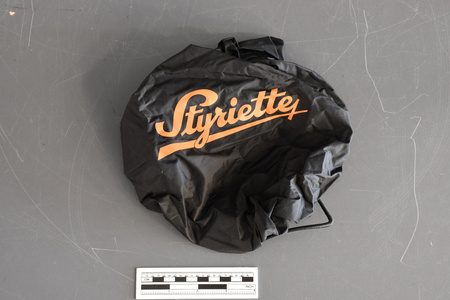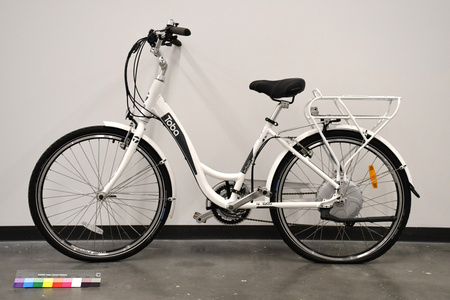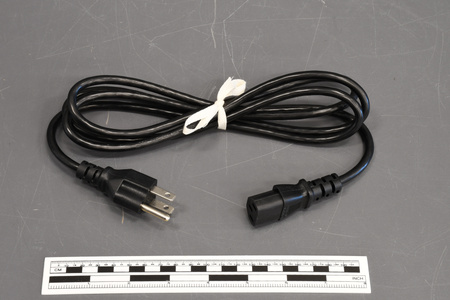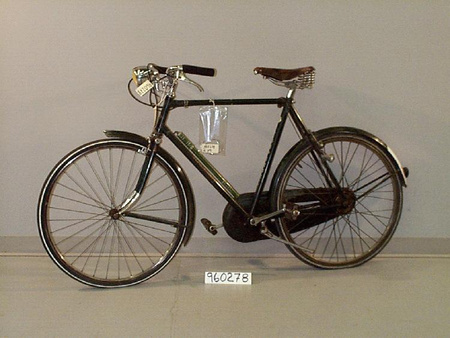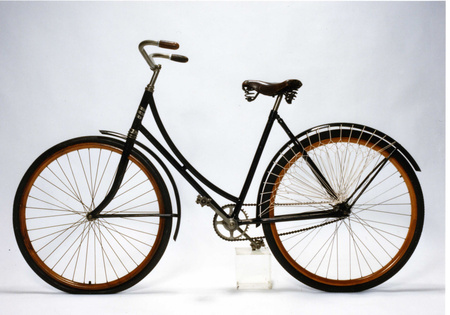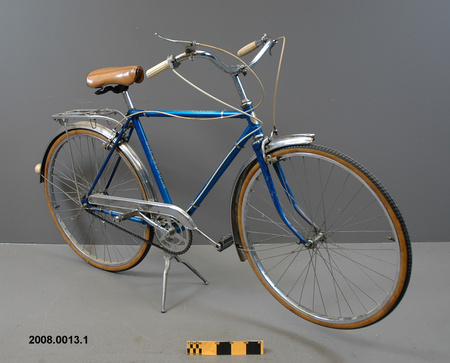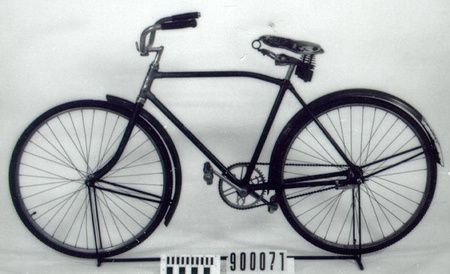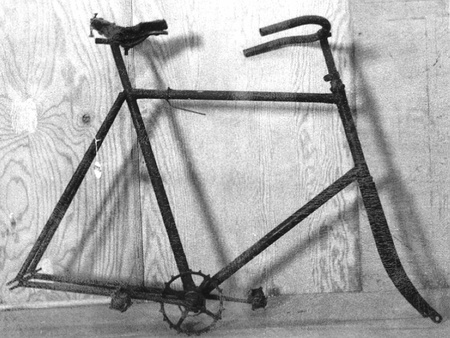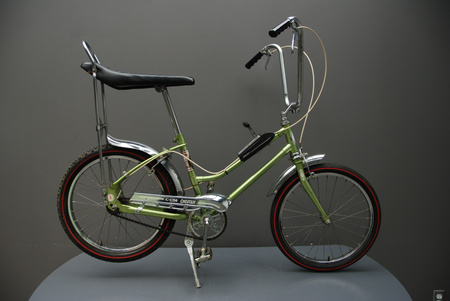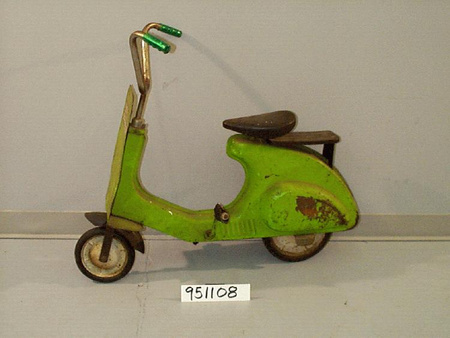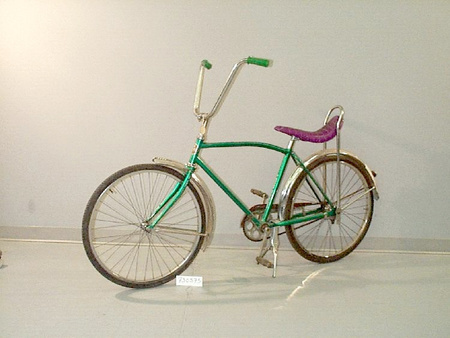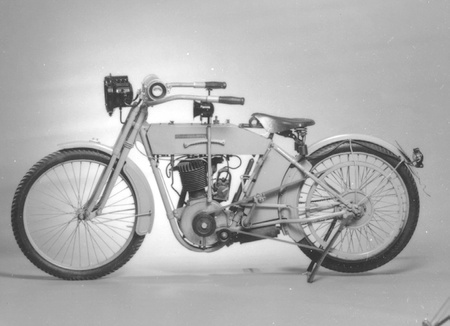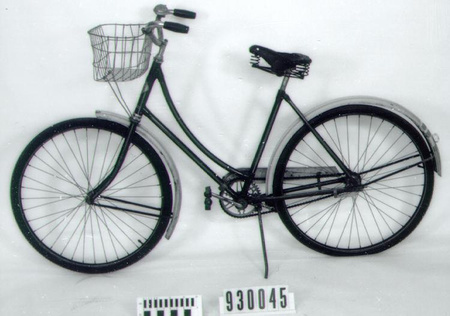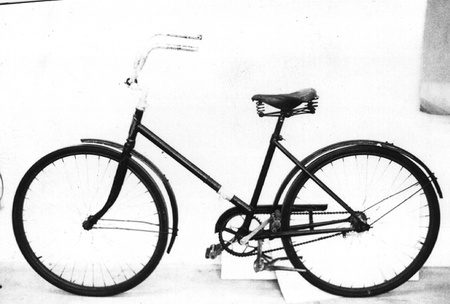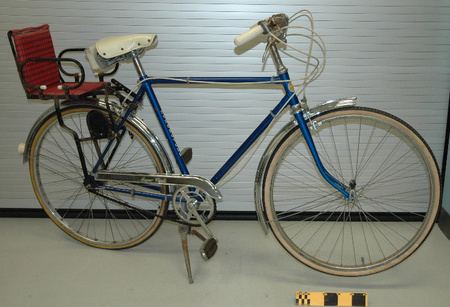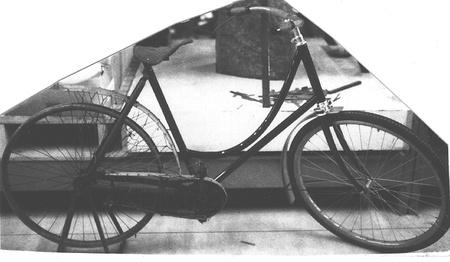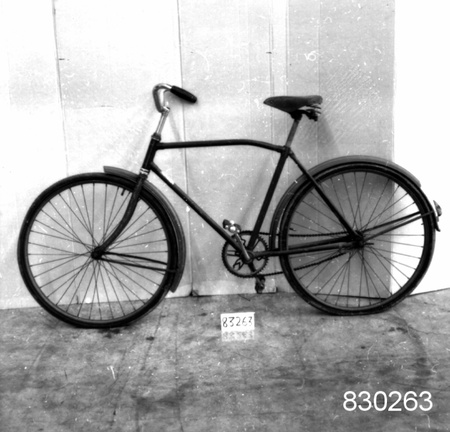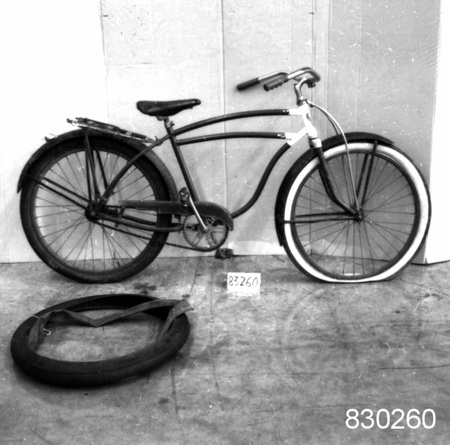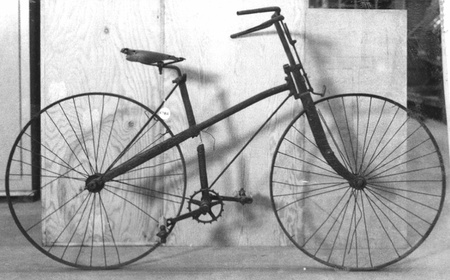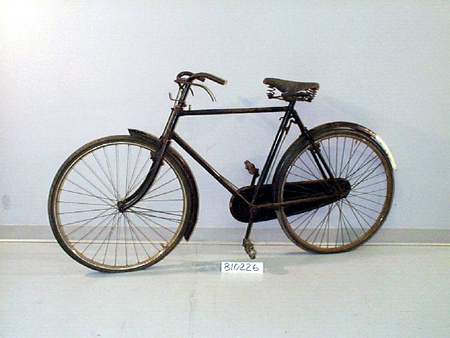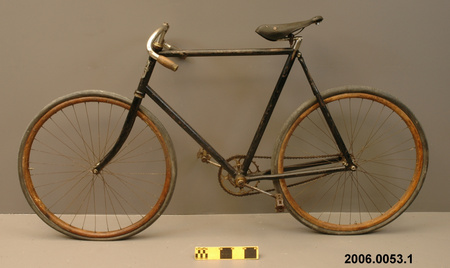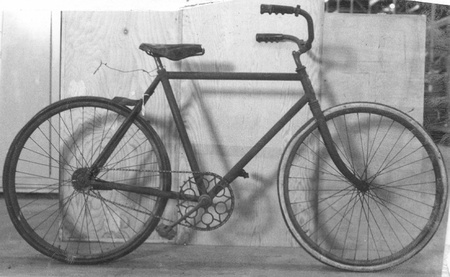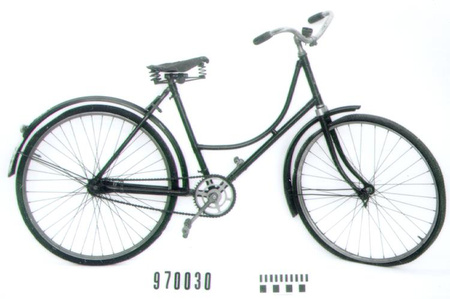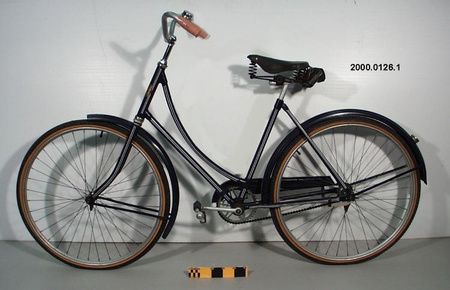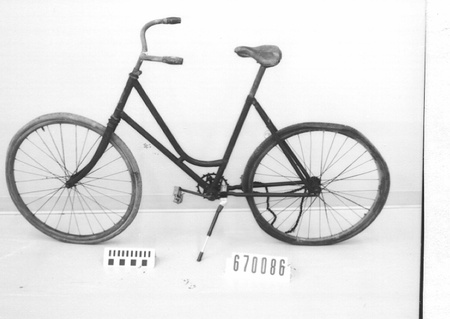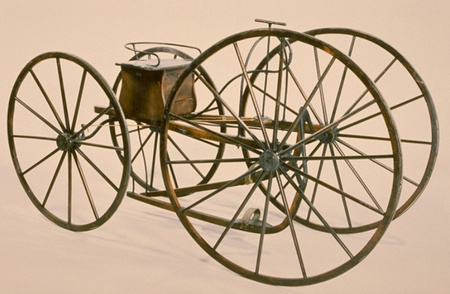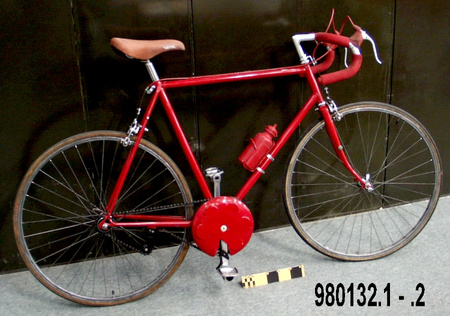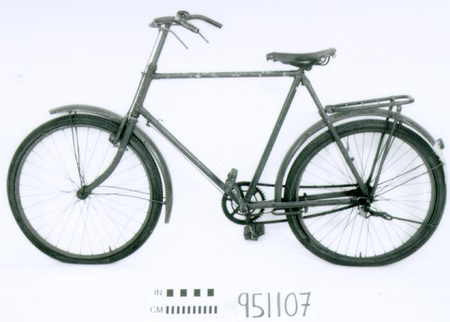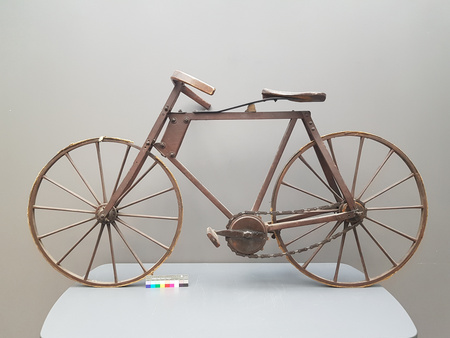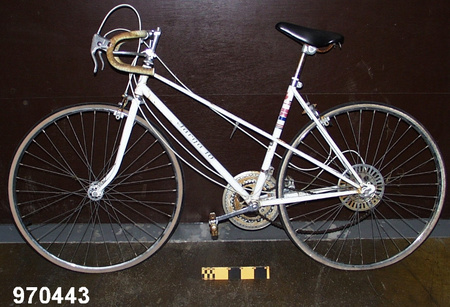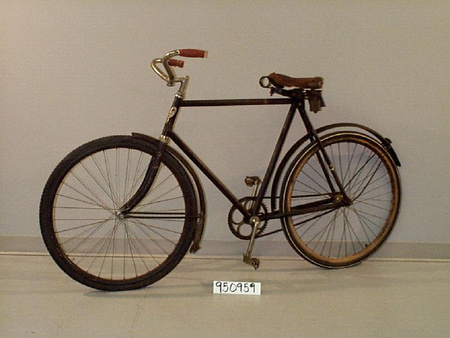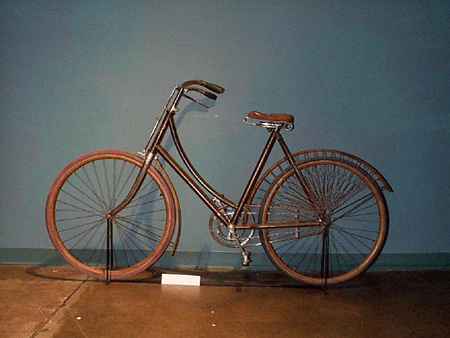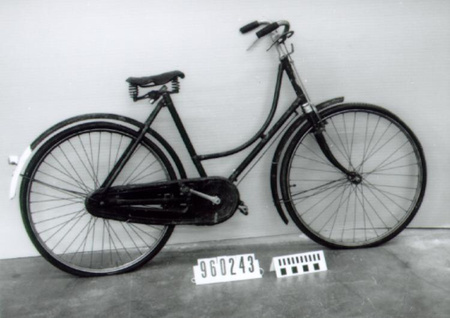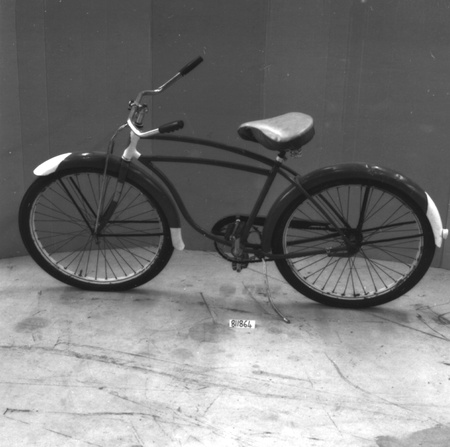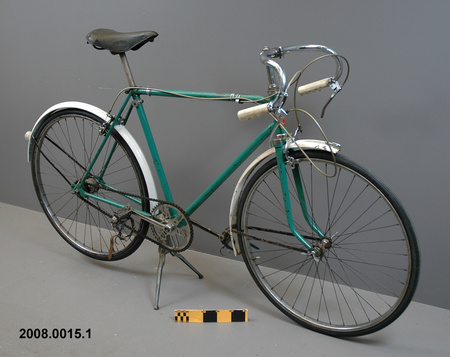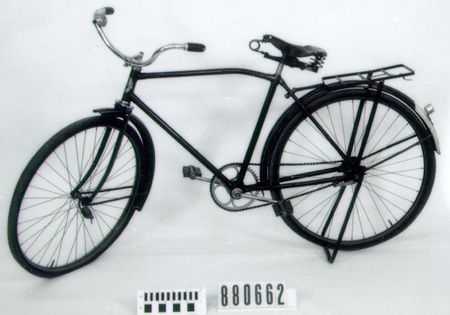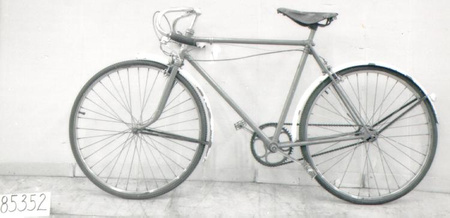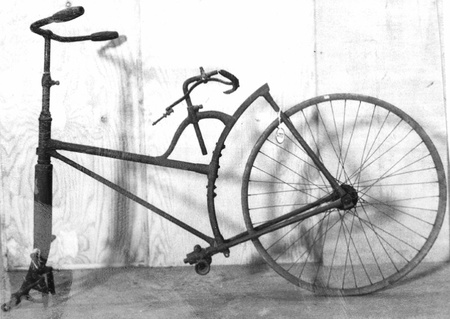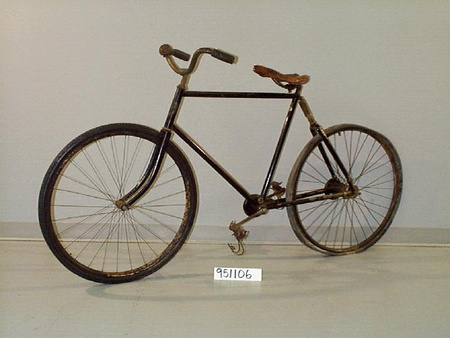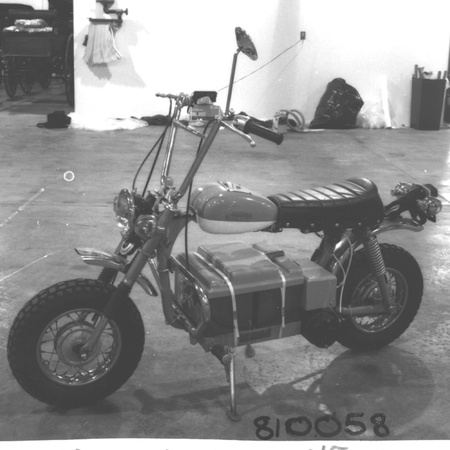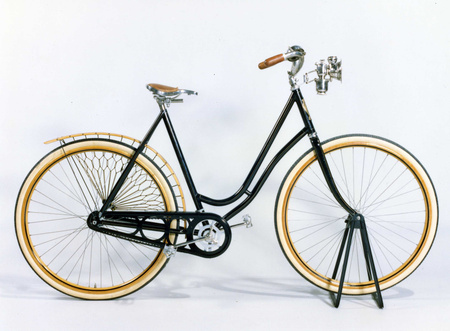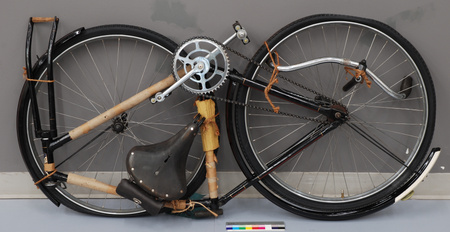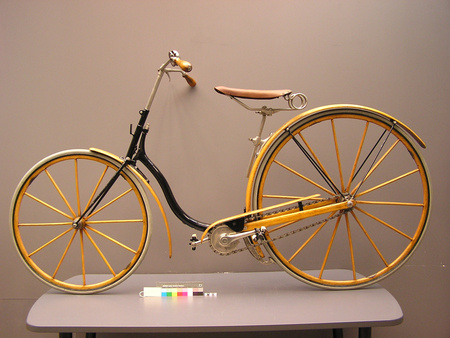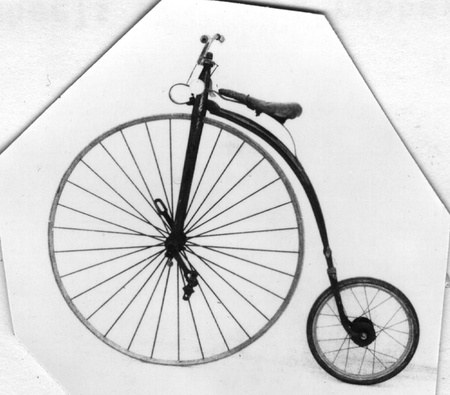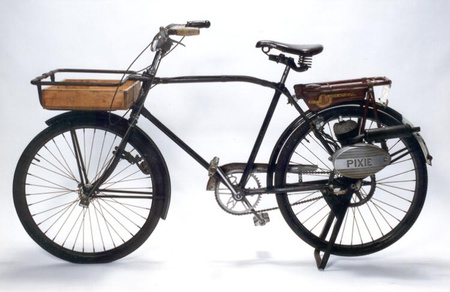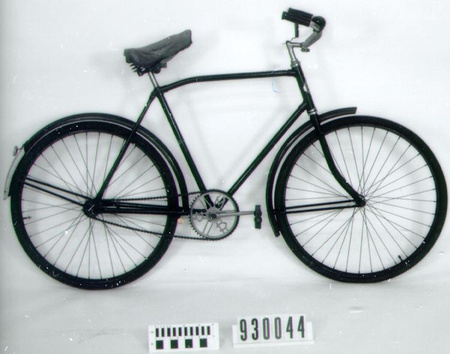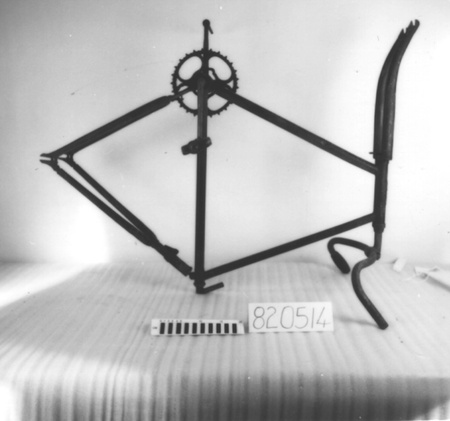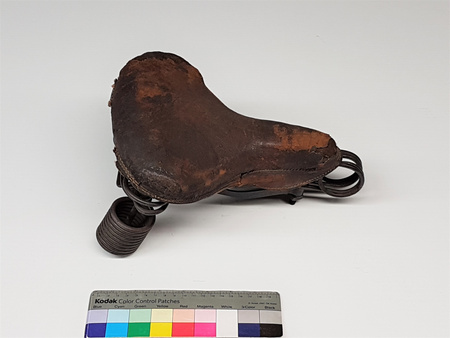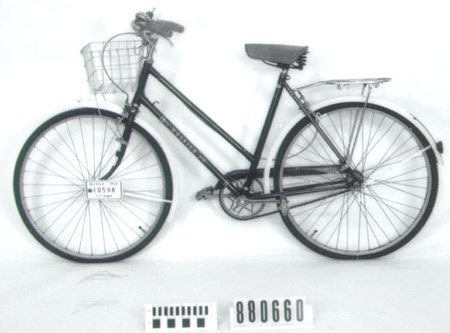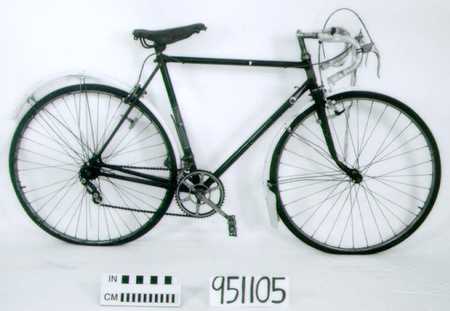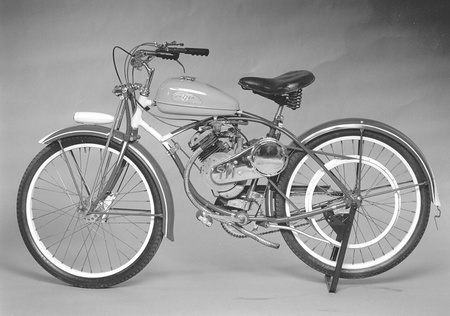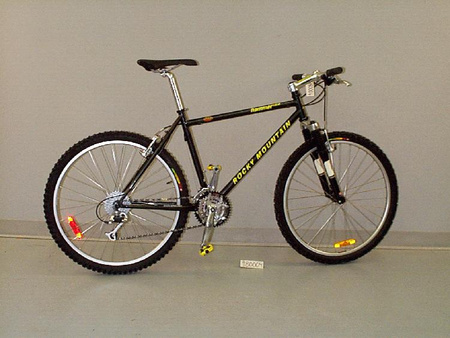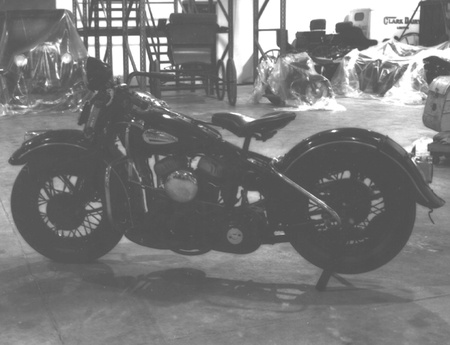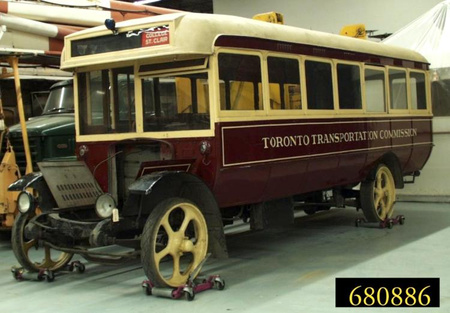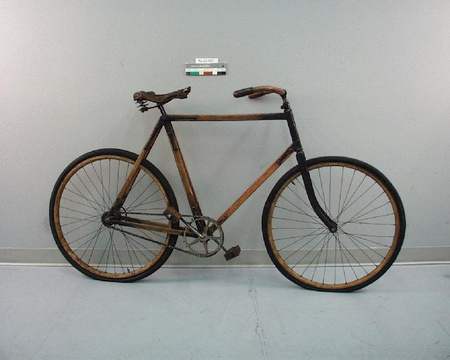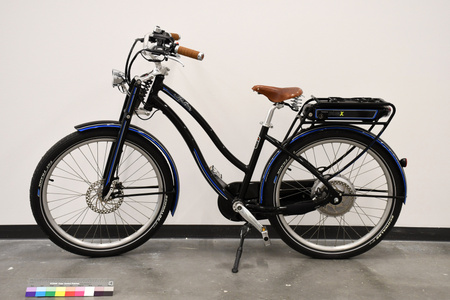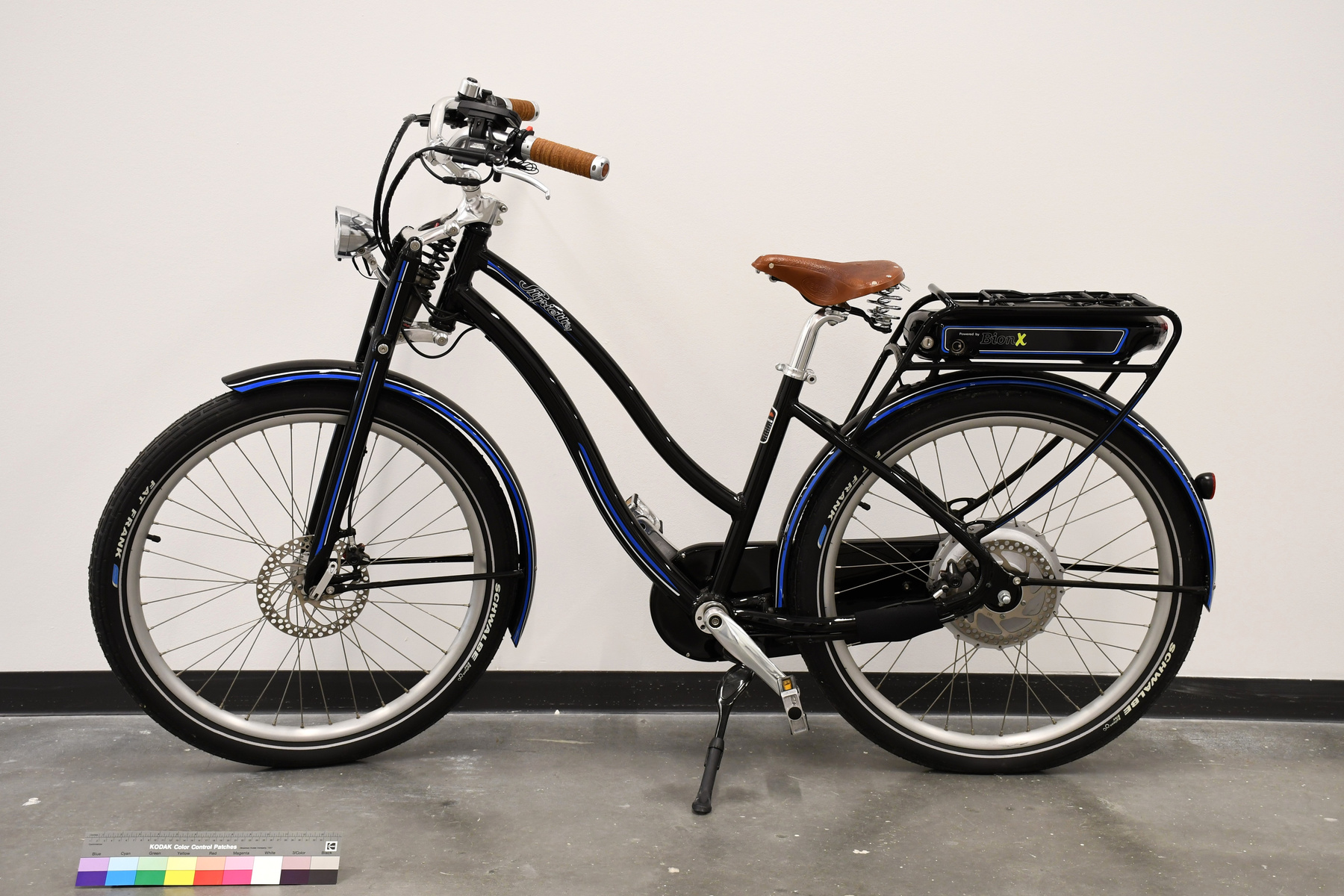Bicycle
Use this image
Can I reuse this image without permission? Yes
Object images on the Ingenium Collection’s portal have the following Creative Commons license:
Copyright Ingenium / CC BY-NC-ND (Attribution-NonCommercial 4.0 International (CC BY-NC 4.0)
ATTRIBUTE THIS IMAGE
Ingenium,
2013.0177.001
Permalink:
Ingenium is releasing this image under the Creative Commons licensing framework, and encourages downloading and reuse for non-commercial purposes. Please acknowledge Ingenium and cite the artifact number.
DOWNLOAD IMAGEPURCHASE THIS IMAGE
This image is free for non-commercial use.
For commercial use, please consult our Reproduction Fees and contact us to purchase the image.
- OBJECT TYPE
- safety/chain drive/drop frame/power assist/electric
- DATE
- 2010
- ARTIFACT NUMBER
- 2013.0177.001
- MANUFACTURER
- Unknown
- MODEL
- Styriette
- LOCATION
- Unknown
More Information
General Information
- Serial #
- 403/500
- Part Number
- 1
- Total Parts
- 3
- AKA
- N/A
- Patents
- N/A
- General Description
- Predominantly metal with synthetic parts and leather handle grips and seat.
Dimensions
Note: These reflect the general size for storage and are not necessarily representative of the object's true dimensions.
- Length
- 178.0 cm
- Width
- 71.5 cm
- Height
- 111.0 cm
- Thickness
- N/A
- Weight
- N/A
- Diameter
- N/A
- Volume
- N/A
Lexicon
- Group
- Non-motorized Ground Transportation
- Category
- Cycles & cycling
- Sub-Category
- N/A
Manufacturer
- AKA
- Unknown
- Country
- Unknown
- State/Province
- Unknown
- City
- Unknown
Context
- Country
- Canada
- State/Province
- Ontario
- Period
- New, never used.
- Canada
-
(From worksheet, ref. 1): Introduced in Canada in the mid-1990s by cycle enthusiasts and environmentally conscious groups, the electric bicycle remained mostly a curiosity to the general public. Despite the status as an object of curiosity, the number of electric bicycle users in Canada grew and in the early 2000s, Transport Canada commissioned a report on electric bicycles. The report noted that there are two design styles of electric bicycles, traditional bicycle and scooter, which has lead to some confusion as to if electric bicycles were bicycles or motorized vehicles. The report recommended that the Motor vehicle safety act be amended to include a new category called Power-Assisted Vehicle (PAV), to capture electric bicycles. Under this new definition, electric bicycles are treated much the same way as bicycles but restrictions have been placed on the technology such as the size of the assisting motor, the length of time it can be on, and the presence or absence of pedals. BionX was founded in 1997 by Jean-Yves Dubé of Asbestos, Quebec. In the early 2000s, BionX produced their first electric bicycle conversion kit. The first production factory was located in Asbestos, Qc, and the head office was in Sherbrooke, Qc. Sometime after 2005, BionX was purchased by Magna International, who retained the BionX name but moved production to Hamilton, ON. - Function
-
A personal transportation vehicle (human-powered and/or electric battery) used for personal transportation in urban settings. - Technical
-
(From worksheet, ref. 1): The first patent for a battery operated bicycle dates to 1895 but the weight of the lead-acid battery made the technology impractical. Since the first patent, the metals used in batteries have changed and the first generation BionX system was made from nickel and cadmium (ni-cad). Although ni-cad batteries were lighter than lead-acid ones the electric bicycle’s range was still limited by the amount of charge the battery could store. The Toba electric bicycle uses a lithium-ion battery which weighs less than the ni-cad and has a greater storage and discharge capacity. The Styriette model was originally launched in 1938 by Steyr-Daimler Puch. This model was equipped with a 60cc, 2-stroke engine and was classified as a motorized bicycle (motorcycle/scooter). BionX purchased the bicycle patent because the company wanted to launch a luxury model “European-inspired” electric bicycle. The BionX model retailed for around $3,500 (base model) and was equipped with a leather seat, leather hand grips, hydraulic brakes, and enclosed chain-guard. The BionX Styriette was the first model to feature a 3-speed internal hub on the rear wheel. The hub technology is now one of BionX corporation’s best sellers to other bicycle manufacturers such as Trek, Yuba, and Smart (Mercedes-Benz). - Area Notes
-
Unknown
Details
- Markings
- On the frame and chain guard: "Styriette"/ Plate on the frame support under the seat: "Styriette/ Baujahr 2010/ Fahrzeuggewicht: 26 kg/ Zul.Ges.Gew.: 150 kg/ Pedelec: zulassungsfrei/ Antrieb: BionX PL250HT-IGH3/ Rahmenmaterial: AL6061/ Parallelogramm Federgabel/ Federweg: 75 mm"/ Plate on the support under the handlebars: "Styriette/ Limited Edition/ 403 / 500/ [signature]/ Manfred Gingl"/ Plate on the proper back of the seat: "BROOKS"
- Missing
- Key for battery removal missing.
- Finish
- Predominantly black frame with blue and white accents, silver-coloured metal parts, and brown handles and seat.
- Decoration
- N/A
CITE THIS OBJECT
If you choose to share our information about this collection object, please cite:
Unknown Manufacturer, Bicycle, 2010, Artifact no. 2013.0177, Ingenium – Canada’s Museums of Science and Innovation, http://collection.ingenium.ca/en/id/2013.0177.001/
FEEDBACK
Submit a question or comment about this artifact.
More Like This
